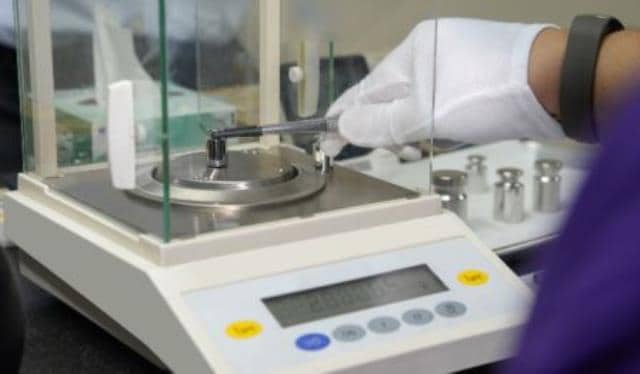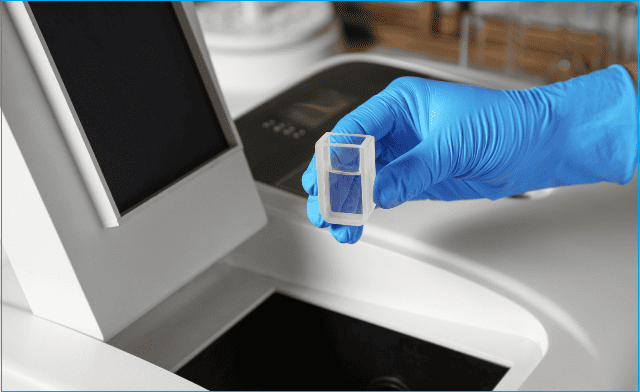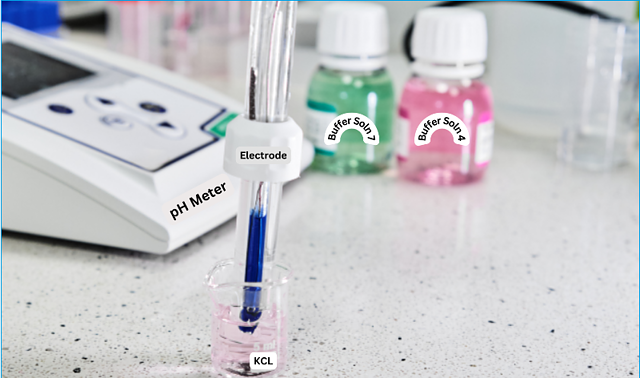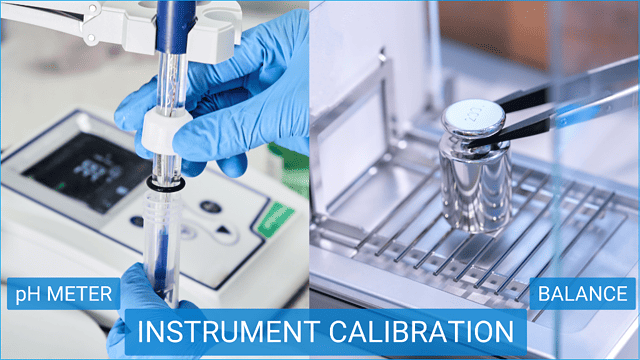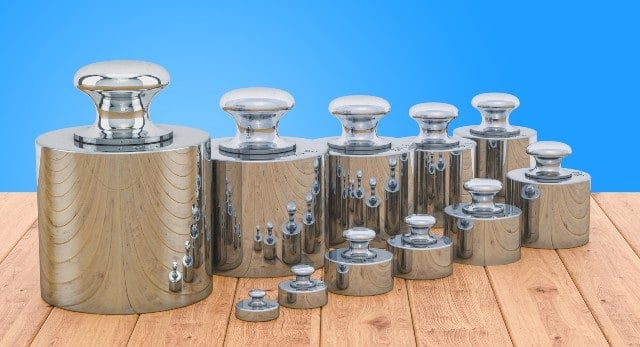
How to prepare equipment calibration master plan standard operating procedure
- Kazi
- Last modified: July 21, 2024
Purpose of calibration master plan SOP
The purpose of the equipment calibration master plan SOP is to define the requirements necessary for establishing and implementing an effective calibration control program.
The calibration master plan aims to ensure that all measuring and test equipment (M&TE) included in the program are calibrated to the manufacturer’s accuracy specifications or the tolerances required by the application.
The National Institute of Standards and Technology (NIST) or other applicable agencies must maintain documented traceability.
This article applies to all equipment, instruments, and standards used in production, storage, and testing that may affect the identity, strength, quality, or purity of pharmaceutical or animal health drug products, active pharmaceutical ingredients (API), and medical devices at GMP sites and logistics centers.
240 SOPs, 197 GMP Manuals, 64 Templates, 30 Training modules, 167 Forms. Additional documents included each month. All written and updated by GMP experts. Checkout sample previews. Access to exclusive content for an affordable fee.
Key Takeaways
What must be established at GMP sites concerning calibration?
A calibration program must be established and maintained, defining responsibilities, criteria, and documentation requirements for equipment and instrument calibration.
Who is responsible for reviewing and approving the calibration SOP?
Technical experts, such as system owners, responsible department heads, and engineering and maintenance principals, must review and approve SOPs. The quality assurance team must ensure that SOPs comply with regulatory requirements and site quality standards.
QA responsibilities for calibration master plan?
– Approval of calibration SOPs and instrument specifications
– Approval of changes to calibration SOPs and specifications
– Approval of contractors performing calibration
– Assessment of Out-of-Tolerance calibration impacts on product quality
– Assurance and review of calibration-related investigations
– Approval of changes to calibration frequencies of instruments or equipment
Who is allowed to perform calibrations?
Only trained and qualified personnel can perform calibrations with their training records maintained.
What must be established before defining an instrument’s calibration method?
Instrument specifications must be established based on application requirements and specific parameters intended for measurement.
How is the traceability of instruments ensured?
Each instrument in the calibration program must have a unique identification assigned before its initial use, providing traceability.
Who assigns instrument classification, and what is its basis?
The system owner and QA assign instrument classification based on the potential impact on the process or product if the instrument malfunctions or is out of tolerance.
What information must be included calibration plan?
– Instrument identification
– Instrument classification
– Instrument location
– Relevant calibration SOPs identification
– Calibration frequency
What factors determine calibration frequencies?
Calibration frequencies are determined based on:
– Instrument classification
– Historical accuracy and precision
– Manufacturer’s recommendations
– Environmental conditions
– Frequency and type of use
What are calibration standards?
Calibration standards must be either primary or transfer standards traceable to national or international standards. An independent, reproducible, or in-house standard should be used if impractical.
What must be done if an instrument is defective or out of tolerance?
If defective instruments are used beyond the calibration due date, they must be designated as such, taken out of service, and an investigation documented.
What are the requirements for contractors performing calibration?
Contractors must develop a calibration master plan, have systems and procedures equivalent to the site’s SOPs, and maintain documentation of their qualifications and services performed.
What steps must be taken before instruments can be removed from service?
If possible, a final calibration should be performed to verify tolerance compliance, and recalibration is required if the instrument is subjected to conditions that could affect its operation.
240 SOPs, 197 GMP Manuals, 64 Templates, 30 Training modules, 167 Forms. Additional documents included each month. All written and updated by GMP experts. Checkout sample previews. Access to exclusive content for an affordable fee.
Responsibilities for calibration master plan
I’d like you to please be sure to include a section for responsibilities.
i. Quality assurance personnel
QA personnel should establish a mechanism for assuring the adequacy of the calibration program that includes:
– Re-evaluation of all product acceptance decisions utilizing equipment or instrumentation, which was subsequently determined to be out-of-tolerance.
– Review and approve decisions to include or exclude M&TE into the calibration and service program.
– Review and approval of calibration and service intervals.
– Review the adequacy of measurement accuracy for product/process/process acceptance and adjust product acceptance limits or take other actions required to ensure adequate measurements.
– Audit the calibration system and M&TE usage to ensure compliance with the intent of this document.
– Review to ensure that product specification changes, new accuracy requirements, and current GMP requirements have been included in the calibration program.
– Review calibration agency performance to ensure appropriate technical levels are maintained.
– Responsible for auditing appropriate functions for compliance with this protocol.
– Responsible for assuring that program action items identified in this document are implemented.
– Responsible for assuring that all metrology personnel have the proper training and that the training documentation is kept on file.
– Responsible for final approval of all documents relating to the metrology department.
– Responsible for tracking document revisions and ensuring that all documents are current.
ii. Metrology personnel
Metrology personnel should be responsible for:
– Responsible for implementing the calibration program.
– Responsible for developing and maintaining a controlled
– Metrology standards laboratory to support the ongoing cGMP processes at the Facilities.
– Metrology and facilities personnel should support all departments within the company, using measuring and test equipment wherever possible. Outside calibration agencies may be used at Metrology’s discretion, provided that the calibration agency has been pre-audited by Metrology and QA and found to be in conformance with this document.
– The calibration program must be strictly followed, and equipment downtime must be minimal.
– Accountable for notifying production and QA personnel of any discrepancies in instrumentation during routine maintenance and calibration. All discrepancies must be recorded on a GMP Incident Report and forwarded immediately to the QA Manager.
– Metrology and QA shall evaluate the procedures outlined in this protocol annually. This evaluation should include monitoring and updating to ensure compliance with cGMP’s.
– Production equipment and calibration programs shall be strictly adhered to, and equipment downtime should be minimal.
iii. Instrument users
– Responsible for ensuring that all instruments used in a cGMP process are included in Metrology’s computerized calibration scheduling system. Any instruments which do not have a calibration label affixed are not part of the system.
– The user must complete an Instrument Form in full and forward it to corporate metrology for entry into the system. The instrument should then be studied and calibrated, and a calibration label should be affixed. It should then be automatically tracked, and the user should be notified when re-calibrating is due.
– Calibrations required daily or before using equipment such as balances and pH meters should be the individual user’s responsibility, even though metrology may perform less frequent and more intense calibrations.
– To maintain accurate calibration records for each equipment used in cGMP-related activities. These records should include calibration, repair, and maintenance data.
– Users wishing to acquire instruments must consult with the corporate metrologist before purchasing to ensure the instrument is adequate for their application.
240 SOPs, 197 GMP Manuals, 64 Templates, 30 Training modules, 167 Forms. Additional documents included each month. All written and updated by GMP experts. Checkout sample previews. Access to exclusive content for an affordable fee.
Calibration terminology and definitions
Please include the following terminologies and definitions in your SOP where required.
Accuracy: The closeness of agreement between an observed or measured value and an accepted reference value.
Calibration: The comparison of a measurement system or device of unknown accuracy to another measurement system or device with a known accuracy to detect, correlate, report, or eliminate by adjustment any variation from the required performance limits of the unverified measurement system or device.
Calibration control program: A system that provides control of all devices that have been accepted into the calibration and service program as measurement standards or M&TE and includes the approval, maintenance, inspection, handling, transportation, use, calibration, service, and repair and cleaning of these devices.
Calibration interval: The elapsed time between a calibration and the subsequent calibration.
Calibration SOP: A Standard Operating Procedure that provides the written procedure for performing the calibration and service of M&TE to obtain predefined accuracy and performance requirements.
Calibration status: Identification of all M&TE as to the type of calibration or maintenance required and, if calibrated, the current calibration validity. This validity is dictated by whether the calibration period has elapsed.
Equipment family: An instrument of equipment family denotes a population or group of equipment built to perform the same type of measurements or functions exclusive of the manufacturer and model. Grouping equipment into a family does not imply they should have the same range or accuracy capabilities.
Instruments: A terminology for all measuring and test equipment used in the testing laboratory.
Measurement standard: A device, solution, material, or radioisotope-sealed source used as a reference for measurement and traceable to NIST or NRC or other recognized source or derived from accepted values of natural physical constants. Measurement standards designations include reference, certified, and transfer standards.
Measurement traceability: The ability to relate individual measurement results to NIST standards through an unbroken chain of comparisons.
Measuring and test equipment: Devices and instruments used to test, measure, calibrate, evaluate, inspect, or otherwise examine materials, supplies, equipment, and systems to determine compliance with specifications established in technical documents.
Metrology:
– Develops and evaluates calibration systems that measure the characteristics of objects. Substances or phenomena, such as length, mass, time, temperature, electric current, luminous intensity, and derived units of physical or chemical measure.
– Identifies the magnitude of error sources’ contribution to uncertainty of results to determine the reliability of the measurement process in quantitative terms.
– Redesigns or adjusts measurement capability to minimize errors.
– Develops calibration methods and techniques based on principles of measurement science, technical analysis of measurement problems, and -accuracy and precision requirements.
– Directs engineering, quality, and laboratory people in design, manufacture, and evaluation, as well as calibration of measurement standards, instruments, and test systems to ensure the selection of approved instrumentation.
Metrology standards: The reference standards laboratory that possesses and uses M&TE of the required order of accuracy, including reference, certified, and transfer standards, to provide measurement support to all applicable in-house precision equipment.
Precision: The quality or state of being precise. The term is used or intended to indicate precise measurements, making for the slightest variation from a standard.
Scheduling system: A scheduling system is established to ensure that M&TE is calibrated at planned intervals and that instruments that cannot be adequately labeled should attend these intervals.
Service inspection: Inspection of test equipment or other calibration equipment or systems intended to detect malfunctions, assure reliable operation during the calibration/service interval, and prevent deterioration due to age or usage.
Examples of services are:
– Visual check for damage, wear, and surface quality. Operational tests for secondary functional characteristics include distortion, ripple, regulation, and sensitivity.
– It also includes preventative maintenance such as cleaning, lubricating, filter replacement, and painting.
– All services rendered should be documented.
240 SOPs, 197 GMP Manuals, 64 Templates, 30 Training modules, 167 Forms. Additional documents included each month. All written and updated by GMP experts. Checkout sample previews. Access to exclusive content for an affordable fee.
How to determine calibration intervals
Measuring and test equipment should be calibrated at intervals established to achieve and maintain a desired level of accuracy and quality.
All test equipment should be calibrated at the manufacturer’s recommended calibration interval to ensure it operates within its accuracy specifications. The calibration data should be recorded and analyzed to determine the optimum calibration interval.
The calibration interval should then be adjusted to reflect this analysis. All instruments should be calibrated at least annually to ensure compliance with cGMPs.
Trending and analyzing calibration data should be a continuous process. If the data shows an instrument’s accuracy has degraded faster than expected, the calibration interval must be adjusted to reflect this change.
i. Interval applications
Intervals may be applied to single items or groups that are reasonably similar regarding family and responsibility.
ii. Interval types
Calibration Intervals must be determined for each piece of equipment and may be fixed or variable.
iii. Interval units
Calibration Intervals must be determined for each piece of equipment and may be based on calendar, cumulative, utilization time, or any other suitable criteria.
iv. Interval assignment
Calibration intervals shall be assigned to attain a probability that M&TE should be within documented accuracy specifications during re-calibration.
Initial intervals for new equipment shall be based on the manufacturer’s recommendation, engineering judgment, or other appropriate sources.
Calibration intervals should be outlined in the individual calibration SOPs and recorded and tracked in the computerized calibration database.
Calibration Intervals may be adjusted, as necessary, based on calibration data or other information that may support a change. Any calibration interval adjustment shall be discussed with the user and Validation Services, documented by Metrology, and approved by QA.
v. Standard grace
M&TE requiring scheduled calibration should have a standard grace period. Annual calibrations should be performed every 365 days ± 10 days.
Semi-annual calibrations should be performed every 182 days ± 5 days, and quarterly calibrations should be performed every 91 days ± 5 days.
vi. Temporary interval extensions
Calibration intervals may be temporarily extended beyond the standard grace period due to critical tests, production schedules, or other requirements provided that:
The length of extension shall be limited by documented policy. Only one extension per calibration interval is permitted.
The batch or product shall be quarantined pending the calibration results.
A temporary authority request must be completed and forwarded to QA before an interval extension can be approved and implemented.
Measurement traceability in calibration
The calibration system should provide the means to directly or indirectly trace assigned values of measurement equipment to values in terms of the NIST or equivalent body.
Traceability documentation
Documentation which substantiates and identifies the means of achieving direct traceability should include information such as:
– Calibration agency: Identify the agency that performed the calibration.
– Certification data: The certified values are determined by the measurement process, where applicable and required.
– Date of calibration and reference traceability report of the certificate.
240 SOPs, 197 GMP Manuals, 64 Templates, 30 Training modules, 167 Forms. Additional documents included each month. All written and updated by GMP experts. Checkout sample previews. Access to exclusive content for an affordable fee.
Adequacy of calibration equipment
Items should be calibrated using measurement systems having adequate accuracy, stability, and range to thoroughly verify the performance of the calibrated item within its specified uncertainty limits.
Wherever possible, all calibration shall be performed with test standards with a minimum accuracy of four times that of the device under test. The standards should be traceable to NIST or an equivalent body.
All test standards should be set up and remain within the Metrology Laboratory’s controlled environment to ensure the instruments’ stability and the tests’ repeatability.
Meteorologists may remove instruments from the calibration lab to be shipped for repair or calibration and to perform field calibrations.
Contractor control of calibration services
When Metrology elects to use an outside contract maintenance and calibration service organization to service its M&TE, it is the responsibility of Metrology and QA to ensure that the contractors’ calibration control system complies with all the company’s requirements.
Metrology personnel should provide pre-approval of a vendor. However, QA must perform the regulatory audit to ensure compliance with cGMP.
To realize this assurance, an agreement should be established that assures that the outside contract service organization:
– Approved procedures outlining the methodology used in maintaining and calibrating the client’s M&TE should be used.
– Should provide a complete system calibration and be willing to give a certified calibration report, complete with all necessary supporting documentation.
– Should allow periodic audits of facilities and records by their client and the client’s authorized representative.
Calibration records & documentation
Records should be maintained for all measuring and test equipment included in the calibration control program, and individual calibration history files should be prepared and maintained for each instrument.
These records should be maintained and stored in the metrology laboratory.
The records should include:
– Identification
– location
– Calibration history
– Calibration control
– Traceability documentation
Upon receiving an instrument Form, a unique non-repetitive identification should be assigned to each M&TE item in the calibration system.
Records should provide information necessary to locate equipment due for calibration.
A record system should be maintained on M&TE, requiring calibration to provide the information necessary for the calibration system’s control, audit, and history.
The system should include:
– The date of each calibration and the date due for recalibration.
– Signatures of the individual who performed the calibration and of the individual who reviewed and approved the calibration record.
– Records of out-of-tolerance conditions.
– The information or location of information necessary to duplicate all graphs, tables, reports, and certificates issued with the instrument.
– The report or location of reports received from outside laboratories indicating instrument accuracy.
– Identification of the standards used in performing the calibration.
– Identification of the procedure employed in performing the calibration.
The record should provide all documentation substantiating and identifying the means of achieving direct or indirect traceability in nationally or internationally recognized standards.
Logbooks should be kept for all M&TE and contain data covering equipment calibration, repair, maintenance, and cleaning. They should be stored in the Metrology laboratory.
The metrology laboratory should retain calibration records for under five years to allow sufficient time for data analysis and decisions about calibration interval adjustments.
Calibration records may then be transferred at the discretion of the corporate meteorologist to archive filling cabinets stored in the metrology laboratory or other controlled archival areas located on company premises.
To ensure compliance with regulatory requirements, these records must be retained for an additional fifteen years or until the expiration date of products being produced has been reached, whichever is greater.
240 SOPs, 197 GMP Manuals, 64 Templates, 30 Training modules, 167 Forms. Additional documents included each month. All written and updated by GMP experts. Checkout sample previews. Access to exclusive content for an affordable fee.
Calibration scheduling system
To optimize equipment inventory management, a computerized system should be utilized to maintain a system for scheduling equipment calibrations.
This automated system should provide for the following:
– Schedule the measuring and test equipment calibrations on the due date or within the grace period specified earlier.
– Sometimes, it may be appropriate to calibrate test equipment before use, not on a periodic schedule.
– Allow for user notification of pending calibrations to resolve scheduling conflicts.
– Provide a mechanism for interval extensions if scheduling conflicts cannot be resolved due to production schedules or critical tests.
– Identifying or removing from service equipment that has exceeded the calibration due date.
– When new equipment is received, it must be entered into the calibration program before being put into service.
Labeling practice in calibration program
To alert the user to the status of a piece of equipment, all calibrated equipment should be labeled or coded to indicate its status.
Labels have been designed and made of materials suitable to the working environment.
Examples of labels would be “CALIBRATED,” “CALIBRATION NOT REQUIRED,” and “LIMITED CALIBRATION” labels identifying the equipment status.
i. Importance of calibration labeling
Labeling of equipment should be performed to serve the following functions:
– Alerts the user to its calibration and operation status.
– Shows that the instrument is part of the inventory and scheduling system.
– Shows that each piece of equipment has been studied regarding its need for calibration or maintenance.
– Applies tamperproof seal (where appropriate) to prevent operator adjustment.
Where practical, all labels should be prominently placed on the instrument, alerting the user to its calibration status.
ii. Content of calibration labels
The calibration labels should include the following:
– Date of last calibration
– Date due (or usage time) for re-calibration
– The person responsible for the calibration
– Calibration certificate number
iii. Labeling impracticality
When an instrument’s size or function precludes the application of a label, a coded marking should indicate calibration status.
Where this is impossible, a copy of the Calibration Certificate should be forwarded to the user. It is the user’s responsibility to be aware of its calibration status.
Metrology should notify the user one month before the instrument’s calibration due date.
iv. System calibration
System calibrations involving many individual calibrated components require calibration labels affixed to each calibrated component and a single label affixed to the system in a prominent location.
v. Types of calibration labels
The representative types, which should be used, are as follows:
– Standard calibration label: supplied by the applicable Standards Laboratory and applied to metrology references and standards only.
– Calibration label: Labels are placed on calibrated instruments periodically, as required. They are available in critical and non-critical formats.
– Calibration not required: place on instruments that do not require calibration by their nature of use.
– Calibration voids if seal is broken: indicates that calibration is invalid if the seal is removed.
– Do Not Use Until Tested and Calibrated: This indicates that the instrument has not been certified for use and must not be used for GMP activities until certified by Metrology.
– Rejected: Indicates that the instrument failed calibration and must be repaired or replaced.
240 SOPs, 197 GMP Manuals, 64 Templates, 30 Training modules, 167 Forms. Additional documents included each month. All written and updated by GMP experts. Checkout sample previews. Access to exclusive content for an affordable fee.
What to include in calibration procedures
Standard Operating Procedures (SOP) should contain sufficient information to calibrate measurement equipment.
i. Requirements
Source: The calibration SOPs should be prepared internally.
Completeness: The SOPs should contain sufficient instruction and information to enable qualified personnel to calibrate.
Approval: All internally prepared procedures must be approved before use by the individuals responsible for SOP approval.
ii. SOP format
The internal procedures should include information such as:
SOP title: Manufacturer, type, or model number of equipment to which the SOP applies.
Purpose: This should define the purpose of the SOP.
Required documentation and materials: A list of all applicable reference materials, manuals, check sheets, calibration standards, associated equipment, and accessories required to perform the calibration.
Safety: (As required) describes any safety considerations that must be observed.
Procedure: Describe the calibration process with any required references, calibration check sheets, environmental considerations, data sheets, and other information helpful or necessary to perform the calibration.
Acceptance criteria: These should include the acceptable accuracy limits for the instrument under test, defining whether it has passed or failed.
Maintaining the quality of the calibration program
The calibration control system should be designed to achieve and maintain a high level of quality consistent with the calibration program requirements.
i. Calibration quality levels
Quality levels may be determined regarding equipment groupings with similar characteristics or for individual systems.
The measuring and test equipment quality level may be expressed as the average in-tolerance rate, acceptable quality level, failure rate, or any other means that provides a meaningful measure.
Test equipment quality levels should usually be expressed regarding average in-tolerance rate.
ii. Deviation from the quality level
If a quality level is consistently above or below the specified level, actions may be taken to reduce the difference between the specified intended goal and the actual quality level. Typical of such actions are:
Interval adjustment
– Procedure change
– Revision
– Removal of equipment from service
– Instrument repair and refurbishment
– Instrument upgrade
240 SOPs, 197 GMP Manuals, 64 Templates, 30 Training modules, 167 Forms. Additional documents included each month. All written and updated by GMP experts. Checkout sample previews. Access to exclusive content for an affordable fee.
Environmental controls of the metrology laboratory
The calibration environment should be controlled to surpass the parameters required by the most environmentally sensitive measurement performed in the area.
To ensure continued calibration accuracy, acceptable ambient operating conditions have been established.
During the construction phase, essential environmental factors such as temperature, relative humidity, air pressure differentials, vibration, electromagnetic interference, and electrical power voltage regulation should be controlled.
i. Metrology ambient operating condition limits
Metrology ambient temperature, relative humidity, and general cleanliness should be monitored daily.
Chart recorders or electronic records of the temperature and humidity should be kept on file for ten years.
Temperature should be monitored continually utilizing an NIST or equivalent traceable circular chart recorder.
– The Metrology Laboratory ambient temperature must be 22ºC ± 2ºC.
– Relative Humidity must be 20% – 40% with no more than a 5% change in the reading over one hour.
ii. Cleanliness
Cleanliness should be maintained to the proper degree in the calibration areas.
This cleanliness condition is to be consistent with “Good Housekeeping Practices.”
iii. Loss of environmental controls
Suppose environmental control is lost and the ambient operating conditions exceed the established limits. In that case, all calibrations within the affected areas shall stop until either control is returned or an appropriate stabilization has been achieved.
An evaluation of the effects indicates that the loss of control has no detrimental effect on the area calibration.
NOTE: Environmental variables should determine the length of the stabilization time. To be considered stable, all controlled variables must return to normal operating parameters and remain constant during three consecutive measurements taken within 30 minutes.
v. Field calibrations
Calibrations should be performed under standard laboratory conditions. During calibration, temperature and humidity should be monitored and recorded in the metrology logbook.
Personnel requirements for calibration
i. Selection and training
The selection and training of competent personnel are important considerations in establishing and maintaining an effective calibration control program. Calibrations should be performed by personnel with the necessary education, training, background, and experience.
ii. Technical/academic requirements
The following technical/academic requirements should be sought in a Metrologist:
– Academic high school diploma or equivalent.
– Instrumentation Diploma from a recognized Technical Institution or equivalent.
– A journeyman instrument mechanic trade certificate or equivalent experience directly related to the trade is preferred but not required.
– A certified engineering technologist (CET) designation is preferred but not required.
iii. Education and training
Personnel performing calibrations of measurement instrumentation and devices should have technical education and training in the area of job assignment.
This includes calibration aspects of GLPs and GMPs, documentation, calibration procedures, calibration adjustments, and measurement equipment and standards.
iv. Qualifications documentation
All certificates, diplomas, or other documentation relating to a metrologist’s qualifications shall be kept in a file to be produced upon request for inspection. This file shall be held separate from the personnel file, which will remain personal and confidential.
Use of computer applications to manage calibration schedules
Computer applications should assist in the maintenance of the calibration control program.
Commercial software should be used to trend and analyze instrumentation calibration data. This analysis should determine the optimum calibration interval, which should be at most one year.
Application may be developed or purchased from a vendor to automate calibration routines and acquire calibration data with measuring and test equipment.
240 SOPs, 197 GMP Manuals, 64 Templates, 30 Training modules, 167 Forms. Additional documents included each month. All written and updated by GMP experts. Checkout sample previews. Access to exclusive content for an affordable fee.
Conclusion
The calibration master plan SOP ensures the planning, scheduling, and execution of all measuring and test equipment (M&TE) used in production, storage, and testing processes to ensure accuracy and reliability.
The calibration master plan establishes a robust calibration control program that aligns with manufacturer specifications and the stringent requirements of pharmaceutical and animal health drug products, APIs, and medical devices.
By adhering to this SOP, GMP sites can maintain the integrity of their operations through rigorous calibration procedures.
The plan requires the collaboration of various experts, including system owners, department heads, and quality assurance teams, to review and approve calibration SOPs, instrument specifications, and any changes therein.
The QA team also oversees the approval of contractors, assessment of out-of-tolerance impacts, and ensures thorough documentation of calibration-related investigations.
Only trained and qualified personnel are authorized to perform calibrations, ensuring high standards are consistently met.
Each instrument must have a unique identification to guarantee traceability. Instrument classifications are assigned based on their potential impact on processes or products. Detailed records and historical data must be maintained to support these activities.
Calibration frequencies are meticulously determined based on instrument classification, historical performance, manufacturer recommendations, and environmental conditions.
The calibration standards used must be traceable to recognized national or international bodies, ensuring the highest accuracy and reliability.
Prompt actions are mandated for equipment found to be defective or out of tolerance, including removal from service and thorough investigation.
The SOP also sets stringent requirements for contractors performing calibration to ensure their procedures and systems meet company standards.
The calibration master plan SOP should be prepared comprehensively, covering responsibilities from QA personnel to metrology and instrument users and defining transparent processes for maintaining high-quality calibration programs.
This structured approach ensures compliance with GMP requirements, ultimately safeguarding the quality and purity of pharmaceutical and animal health products.

Author: Kazi Hasan
Kazi is a seasoned pharmaceutical industry professional with over 20 years of experience specializing in production operations, quality management, and process validation.
Kazi has worked with several global pharmaceutical companies to streamline production processes, ensure product quality, and validate operations complying with international regulatory standards and best practices.
Kazi holds several pharmaceutical industry certifications including post-graduate degrees in Engineering Management and Business Administration.

